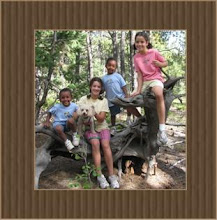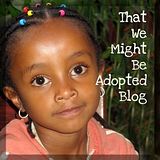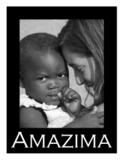This is a disorder being diagnosed more often in today's medically aware climate. It is not that it did not previously exist in the same levels as it does today, we are just a more medically savvy culture and diagnoses are more likely with knowledge. That is a good thing. For one, it helps us all succeed and it also lessens the narrowness of normal. No, indeed, normal is becoming broader and broader as we grow in knowledge. I sure do appreciate that!
My biologcial kids have SPD in varying forms. You would never guess. Success is sweet if you take the time to do the work. But, the reason for this post is that many many adopted kids deal with forms of SPD. Some come to it genetically, some by environment. An orphange is really no place for a child. No matter how great the facility or love for the kids, there just are not enough hands or anything to go around. Kids are effected by this at a time when their neuro sensory systems are developing. If you understand it you can help your child overcome it.
Here are some great resources regarding Sensory Processing Disorder:
Books:
Books
 | The Out-Of-Sync Child : Recognizing and Coping With Sensory Integration Dysfunction by Carol Stock Kranowitz. ISBN: 0399523863. The first section of the book is on recognizing SI dysfunction and includes a long checklist of characteristics of it. The second part is on coping with it. There are entire chapters in each on the vestibular sense. |
Relationship of Learning Problems and Classroom Performance to Sensory Integration by Marie Di Matties, Quirk. ISBN: 9991105417. The book presents each sensory sytem by defining it and describing behaviors associated with hyperactive and hypoactive responses of that system. It contains short chapters structured to reflect a hierarchical relationship between sensory registration, sensory processing, "higher level" sensory integrative skills, and ultimately, abstract thinking and academic skills.
Teachers Ask About Sensory Integration by Carol Kranowtiz, Stacy Szklut, Stacey Szklut, Carol Stock Kranowitz, Carol Kranowitz Stacey Szklut. ISBN: 1893601293. A companion product to "Making Sense of Sensory Integration". Carol Stock Kranowitz interviews expert occupational therapist Stacey Szklut about how to teach children with sensory integration problems. This full-length audio tape includes narration by public health physician Dr. David Silver. A 60-page companion booklet includes classroom checklists, idea sheets, sensory profiles, and extensive resources customized for the classroom teacher.
|
| ||
The Goodenoughs Get in Sync: A Story for Kids about the Tough Day When Filibuster Grabbed Darwin's Rabbit's Foot and the Whole Family Ended Up in the Doghouse--An ... Introduction to Sensory Processing Disorder (Hardcover)
~ Carol Stock KranowitzWeb sites:
SPD and adopted kids and more
The development of neuro sensory system
check list for SPD another list and a check list for adults and adolecents
what is SPD and more about it
What you should know
Signs and symptoms of SPD more signs and symptoms of SPD
SPD in the classroom and schools
How to help my child with SPD, on the above sites and these also:
learning, etc.
good activites
Where to buy sensory products like weighted blankets, vests, toys and comfort items.
- http://www.achievement-products.com/Product/ProductList.aspx?category=115&src=categorynavigation1
- http://www.amazon.com/s/?ie=UTF8&keywords=sensory+integration+products&tag=googhydr-20&index=aps&hvadid=8116263819&hvpos=1t3&hvexid=&hvnetw=g&hvrand=19818287681005053889&hvpone=&hvptwo=&hvqmt=b&ref=pd_sl_4huuvd5e4r_b
- http://www.sensory-processing-disorder.com/sensory-integration-products.html
- http://www.sensoryinterventions.com/












































Sensory processing disorder is a disorder of the neurological system seen in children that leads to problems of speech, sight, feel, taste and smell. The symptoms include crashing into objects such as furniture or walls, putting items in mouth that are not food, fear of water and sound and things that produce loud. Children with this disorder have problems like anxiety disorder, frustration, stress.
ReplyDeleteThe comment above is from a good site link resources for SPD and other disorders. While this description is of an extreme case, there are many children who display lower levels of SPD, but it is still an issue to get help for. This also describes a child with the sensory seeking form of SPD. Children who have sensory avoidance will display opposite symptoms such as: no touching, texture sensitivity, eating issues and do not like to be held. Both are symptoms of SPD and should be addressed for the child's health and wellness.
ReplyDelete